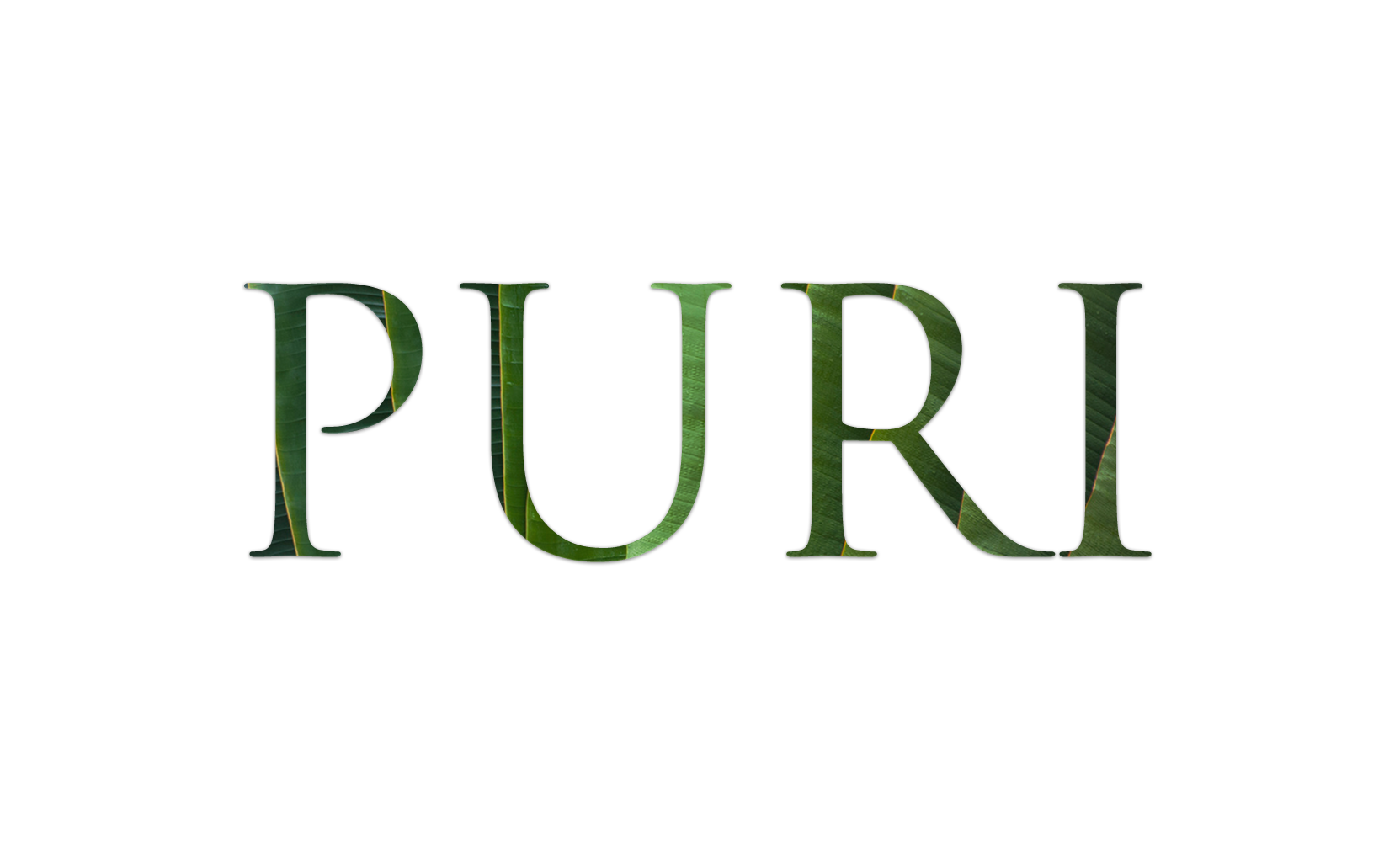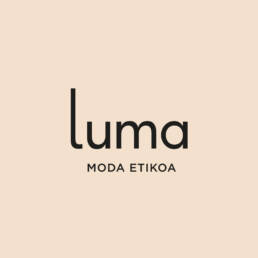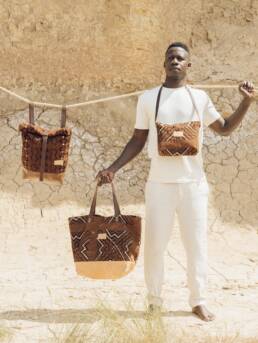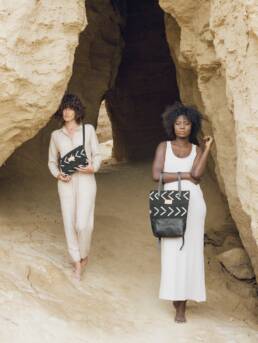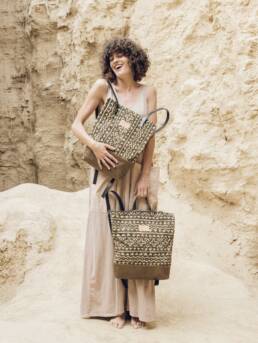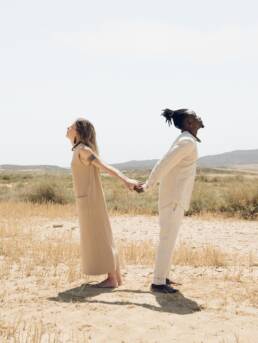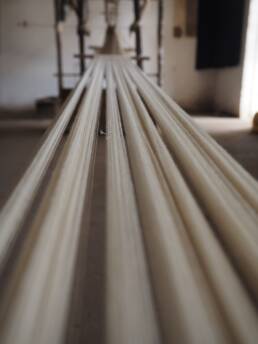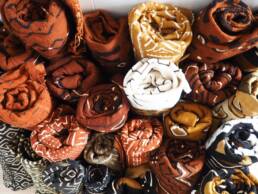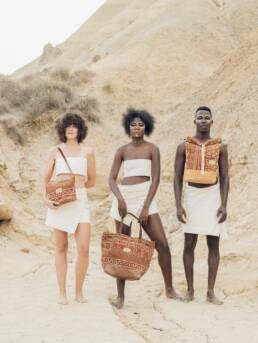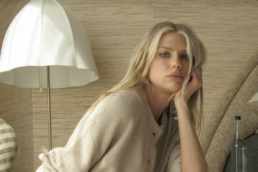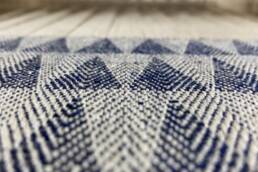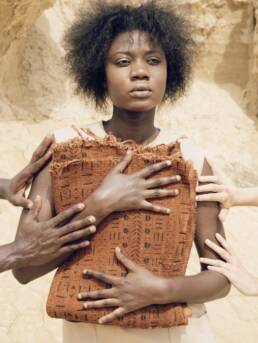
LUMA, The Ethical Fashion
LUMA moda etikoa (Luma ethical fashion in euskara)
LUMA is life, Luma is care for people and their consumption, which seeks to create ties between cultures, using fashion as a way of understanding life.
The brand is committed to fair, sustainable, diverse, conscious and transparent trade, offering people who join Luma timeless, unique and exclusive creations designed and produced in the Basque Country.
Bogolan is the main material used by the brand. It is an ancestral West African fabric whose origin goes back to the Bambara ethnic group of Mali, where the word bogo means clay, mud and lan means to make; so bogolan means “made with clay”. It is organic cotton, woven, dyed and hand painted by Malian artisans.
LUMA works in the design and production of all its creations, combining Bogolan fabrics from Mali with materials purchased nationally and internationally, seeking a responsible and sustainable socio-environmental impact.
Bogolan, also known as mud painting, is the main material used in Luma. It is an ancestral textile technique that combines natural elements, mysticism, medicine, female empowerment and identity discovered and passed on by Malian women of the Sahel.
Every person has references, teachers, masters or guides, and in Mai’s case, she could not have been closer.
Her father has been her compass since she was born. He taught her how to tie her first macramé knots and since then, she has spent countless hours working both macramé and hand sewing leather.
In 2016, her father became ill and had to quit his job. He is a strong man and decided to face the challenge that life had put him looking for new hobbies, so he started raising birds. Although Mai never liked to see caged birds, she decided to help him and continue sharing hobbies with him, not only because he was her father but because with his attitude he became an example of life.
Over the years, they continued to strengthen their relationship and in 2016, taking advantage of the Senegalese friend Massamba, who traveled to his country, Mai’s father proposed her to add one more experience and sign up for the trip.
They took their suitcases and the wheelchair and began a new adventure that changed their lives completely. So much so that when they returned to Donosti, Mai could only think of going back and doing something with the fabrics she had met there.
Soon after, she began to consider leaving her job in education and betting on the project she dreamed of. It was not an easy decision but she had fallen in love with Bogolán fabrics and as it happens with dreams, she let herself be carried away by her imagination and little by little she was giving it more life. Without realizing it, she had the name in her head: Luma, and she had begun to think about the real possibilities of taking the leap and starting to design her own creations.
Thus, the trips to Senegal were happening and when she met her partner, Max, the circle was closed. Max was a Senegalese who had only been in the Basque Country for a short time and barely spoke Spanish. Such was the connection that, despite not knowing each other’s languages, they had no problem understanding each other. And, that sign of karma added to his unconditional support made him not resist any longer and on the fifth trip he brought the first Bogolan fabrics to give life to LUMA.
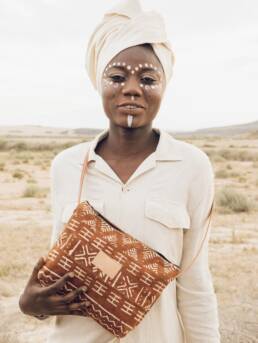
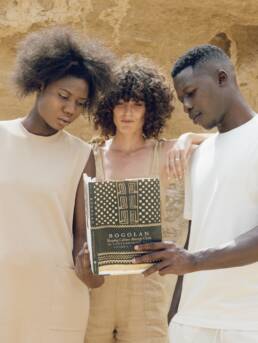
LUMA thus became a philosophy of life, LUMA is to create without borders, Luma is all the people who dream of a world that guarantees the rights of all the people who live in it, forgetting the concept of nationality. LUMA is feather, in one of the mother tongues of the project (Euskara). Luma is the way they have chosen to work for the change they want to see in the world.
Why is LUMA a Sustainable and Ethical brand?
From the beginning it was clear to them that Luma would not be something fixed, but a way of creating without limits or boundaries. Something alive. But even so, just like people, projects need values and principles to guide their steps. They always thought that it needed to have clear principles on which to base itself and thus be able to work with dignity.
Fair Trade
In Luma, working with African fabrics and working with the people who create those fabrics is the same, they value their work and their culture.
Until they managed to find the artisans of the Bogolan technique in Mali, they bought the fabrics in the markets of Senegal.
Today, they work with a social project in Mali. It is a school-workshop that was created to train young people who want to embark on a career in this field and to revalue this natural technique that today is lost with the industrial technique.
A secret language
Bogolan fabrics are loaded with messages that have been transmitted from generation to generation through a universe of symbols, colors and shapes. The women of Mali created a secret language, a way to express their world, their thoughts, advice and protect their daughters and granddaughters with something sacred to the Bámana culture, the earth.
Thanks to the people who support Luma, this story will continue to grow in this direction, from the soul and for the soul.
Clay and natural pigments on cotton
The traditional bogolanfini is characterized by the contrast of black and white, because it is the color of the Bámana, the Bámana, it is their identity. The modern bogolanfini, on the other hand, is characterized by the incorporation of earth tones and even other colors, the color being the change from the past to the future.
The bogolanfini used in Luma is made of organic cotton fabric. First, the leaves, bark or roots of native trees such as N’galama (Anogeissus leiocarpus) or Npekuba (Lannea microcarpa) are boiled to achieve a vegetable dye. After several phases of washing and drying in the sun, the desired color is obtained and the mud is applied. Wherever the mud touches the dyed fabric, the dye reacts and darkens. This is the result of the reaction of the oxide of the clay with the dyed fabric.
Finally, the fabric is washed to remove any mud that may have adhered to it and to make it as clean as possible. Other clear drawings are obtained without mud, by bleaching the fabric directly.
Ethical fashion
In LUMA they are clear that they are committed to fair, diverse, conscious and transparent trade, offering people who join Luma timeless, unique and exclusive creations, created by real people and for real people. For this reason, they work on the design and production of all their products combining Bogolan* fabrics from Mali, together with materials purchased nationally and internationally and always looking for a responsible and sustainable socio-environmental impact.
Bogolan, also known as mud painting, is the main material used in Luma. It is an ancestral textile technique that combines natural elements, mysticism, medicine, female empowerment and identity discovered and passed on by Malian women of the Sahel. The word bogo means “mud, earth”, lan means “to make” and fini means “cloth”; so bogolan means “made with mud” and bogolanfini means “the result of the earth on the cloth”.
